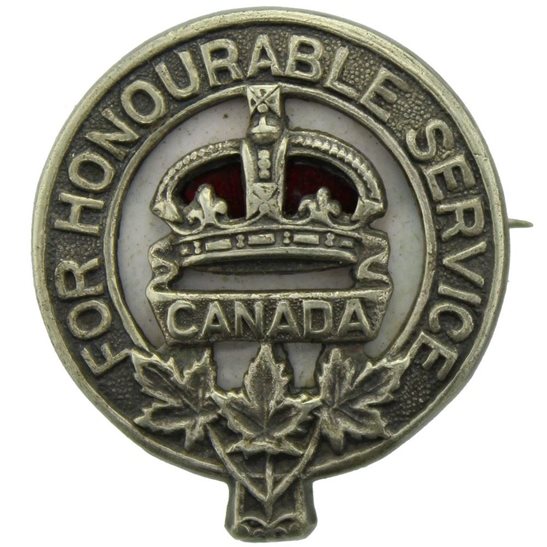Personal Details
Born: 8 February 1890 in Calverhall, Shropshire and baptised on 13 April 1890 at Holy Trinity Church, Calverhall.
Family: He was one of seven surviving children born to Benjamin Nicholls, a coachman and gardener and his wife Alice, nee Weaver. He married Louisa Emily Witherden in 1915 in Thanet, Kent and together they had a son Sidney G.. George married Ethel M Willett in 1940 in Crewe Cheshire. The couple already had five children, Dorothy, Joyce, Raymond, Robert and Maurice.
Residence: In 1891 and 1901 his family were living in Calverhall, Shropshire. He enlisted in Montreal but no address can be found for him during the time he was living in Canada. An address of 24 Beam Street, Nantwich Cheshire was written on his medal card. In 1939 he was living at 51 Manor Road North, Nantwich, Cheshire.
Employment: His occupation in Canada in 1914 was a teamster. By 1939 he was a labourer working on the railway.
Died: In 1975 in the Congleton and Crewe District, aged 84.
Military Details
Regiment: Canadian Expeditionary Force (Canadian Field Artillery)
Rank: Bombardier
Service Number: 89963
Date of Enlistment: 16 March 1915 as George Weaver (previously 14 November 1914 as George Nicholls)
Date of Discharge: 14 July 1919 (previously 27 February 1915 as George Nicholls)
Reason for Discharge: Demobilisation in England (previously as medically unfit)
Other Information: He originally enlisted as George Nicholls on 30 November 1914 but was discharged as medically unfit on 27 February 1915. He re-enlisted as George Weaver (his mother`s maiden name) on 16 March 1915.
George was awarded the Campaign medals (Victory and British War Medals) and the Canadian War Service Badge

The British War Medal (also known as 'Squeak') was a silver or bronze medal awarded to officers and men of the British and Imperial Forces who either entered a theatre of war or entered service overseas between 5th August 1914 and 11th November 1918 inclusive. This was later extended to services in Russia, Siberia and some other areas in 1919 and 1920. Approximately 6.5 million British War Medals were issued. Approximately 6.4 million of these were the silver versions of this medal. Around 110,000 of a bronze version were issued mainly to Chinese, Maltese and Indian Labour Corps. The front (obv or obverse) of the medal depicts the head of George V. The recipient's service number, rank, name and unit was impressed on the rim.
The Allied Victory Medal (also known as 'Wilfred') was issued by each of the allies. It was decided that each of the allies should each issue their own bronze victory medal with a similar design, similar equivalent wording and identical ribbon. The British medal was designed by W. McMillan. The front depicts a winged classical figure representing victory. Approximately 5.7 million victory medals were issued. Interestingly, eligibility for this medal was more restrictive and not everyone who received the British War Medal ('Squeak') also received the Victory Medal ('Wilfred'). However, in general, all recipients of 'Wilfred' also received 'Squeak' and all recipients of The 1914 Star or The 1914/1915 Star (also known as 'Pip') also received both 'Squeak' and 'Wilfred'. The recipient's service number, rank, name and unit was impressed on the rim.

The Canadian War Badge was awarded to members of the Canadian Expeditionary Force (CEF) who served in the United Kingdom or at the front, and who, due to old age, wounds or sickness, had retired or relinquished their commissions or been honourably discharged.

